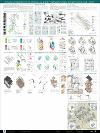Mostrar el registro resumido del documento
Actividad y escenografía como herramientas de reinterpretación de espacios domésticos espontáneos, en Usme
| dc.contributor.advisor | Vinasco, Fabio Andrés |
| dc.contributor.advisor | Martinez, Yira Catalina |
| dc.contributor.advisor | Ardila, Juana Marcela |
| dc.creator | Ramírez-Rodríguez, Diana Rocio |
| dc.date.accessioned | 2021-06-30T22:53:46Z |
| dc.date.available | 2021-06-30T22:53:46Z |
| dc.date.created | 2021-06-28 |
| dc.identifier.uri | http://repositorio.uniagustiniana.edu.co/handle/123456789/1752 |
| dc.description | La presente investigación abarcó la relación entre actividad y escenografía como herramienta para reinterpretar la vivienda de desarrollos espontáneos del barrio San Germán, en Usme, Bogotá; el argumento de partida fue la precariedad cualitativa de los espacios domésticos los cuales limitan el desarrollo de las actividades al no planificar el devenir de su escenografía en el tiempo, siendo un riesgo para esta población como la más afectada durante la pandemia del COVID-19 según la OMS (2020). Por tanto, para reconocer las actividades y configuraciones espaciales de las viviendas, se realizó un estudio de casos en el que se contrastaron las principales actividades y tipos de escenografías, este análisis permitió plantear un sistema habitacional prefabricado, flexible y adaptable las necesidades de las familias, actividades y lugar de emplazamiento, como parte de un proceso de investigación que permitió concluir que, en los sectores de bajos ingresos, no pueden establecerse tipologías convencionales ideales, sino que se requiere de una visión sistémica, en la cual se establezca un sistema programático y diferentes variaciones de escenografías multifuncionales, donde el usuario pueda interactuar fácilmente y alterar el espacio de acuerdo a las diferentes actividades habitacionales, productivas y colectivas manteniendo el tejido social característico en territorios auto gestionados, los cuales han sido un riesgo en la ocupación de las periferias urbanas y áreas protegidas. |
| dc.description.abstract | The present research covered the relationship between activity and scenography as a tool to reinterpret the housing of spontaneous developments in the San Germán neighborhood, in Usme, Bogotá; the starting argument was the qualitative precariousness of domestic spaces which limit the development of activities by not planning the evolution of their scenography over time, being a risk for this population as the most affected during the COVID-19 pandemic according to WHO (2020). Therefore, in order to recognize the activities and spatial configurations of housing, a case study was conducted in which the main activities and types of scenographies were contrasted, this analysis allowed to propose a prefabricated housing system, flexible and adaptable to the needs of families, activities and location, as part of a research process that led to the conclusion that, in low-income sectors, ideal conventional typologies cannot be established, Rather, a systemic vision is required, in which a programmatic system and different variations of multifunctional scenographies are established, where the user can easily interact and alter the space according to the different housing, productive and collective activities, maintaining the characteristic social fabric in self-managed territories, which have been a risk in the occupation of urban peripheries and protected areas. |
| dc.format.mimetype | application/pdf |
| dc.language.iso | spa |
| dc.rights | Atribución-NoComercial-CompartirIgual 4.0 Internacional |
| dc.rights | Atribución-NoComercial-CompartirIgual 4.0 Internacional |
| dc.rights.uri | http://creativecommons.org/licenses/by-nc-sa/4.0/ |
| dc.source | reponame:Repositorio Institucional UniARI |
| dc.source | instname:Universitaria Agustiniana |
| dc.subject | Asentamiento humano |
| dc.subject | Arquitectura interior |
| dc.subject | Desarrollo sostenible |
| dc.subject | Escenografía |
| dc.subject | Vivienda |
| dc.title | Actividad y escenografía como herramientas de reinterpretación de espacios domésticos espontáneos, en Usme |
| dc.type | info:eu-repo/semantics/bachelorThesis |
| dc.rights.accesRights | info:eu-repo/semantics/openAccess |
| dc.rights.acceso | Abierto (Texto Completo) |
| dc.subject.lemb | Arquitectura interior |
| dc.subject.lemb | Espacio interior (Arquitectura) |
| dc.subject.lemb | Espacio (Arquitectura) |
| dc.subject.keyword | Interior architecture |
| dc.subject.keyword | Housing |
| dc.subject.keyword | Human settlemen |
| dc.subject.keyword | Scenography |
| dc.subject.keyword | Sustainable development |
| dc.type.hasVersion | info:eu-repo/semantics/acceptedVersion |
Archivos en el documento
Este documento aparece en la(s) siguiente(s) colección(ones)
 Esta obra está bajo licencia internacional Creative Commons Reconocimiento-NoComercial 4.0.
Esta obra está bajo licencia internacional Creative Commons Reconocimiento-NoComercial 4.0.




